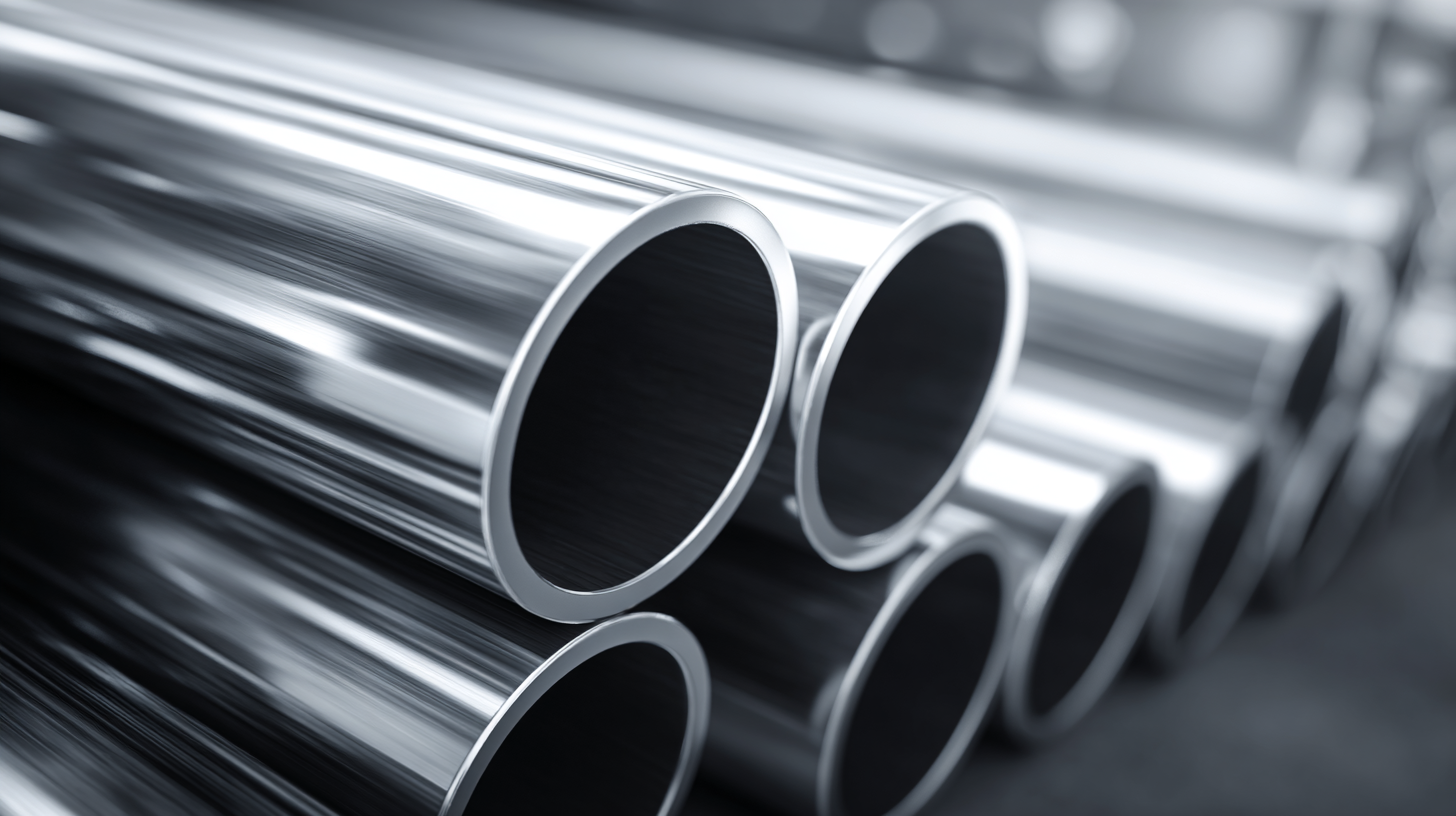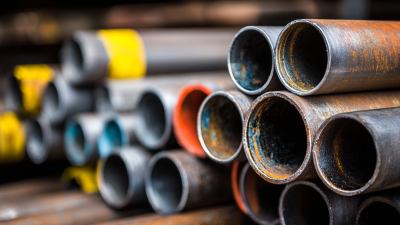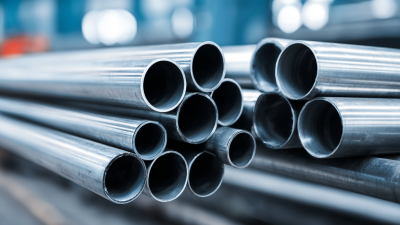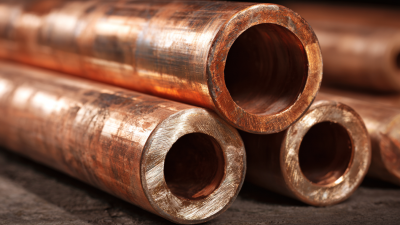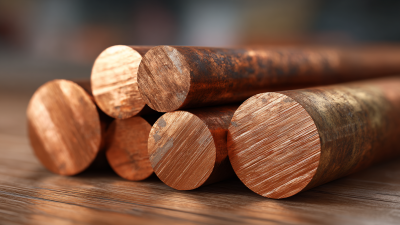Exploring the Advantages of Using Pipe Stainless in Modern Construction Techniques
In recent years, the construction industry has increasingly recognized the multifaceted advantages of
Pipe Stainless, particularly in modern building techniques. According to the
Global Stainless Steel Pipe Market Report 2021-2027, the demand for stainless steel pipes is projected to grow at a
5.2% CAGR, underscoring their vital role in sustainable construction projects. The inherent properties of Pipe Stainless,
such as corrosion resistance, high strength-to-weight ratio, and aesthetic appeal, make them an ideal choice
for architects and engineers aiming for longevity and
reduced maintenance costs.
Additionally, studies by the American Institute of Steel Construction indicate that structures utilizing
stainless steel components can enhance safety and reduce the carbon footprint, aligning with industry goals
towards more eco-friendly building practices. As construction trends evolve, Pipe Stainless emerges as a
key player in the pursuit of innovative and sustainable building solutions.
The Durability of Stainless Steel Pipes in Construction Projects
The durability of stainless steel pipes has become a focal point in modern construction techniques, offering numerous advantages that enhance the longevity and reliability of construction projects. Unlike traditional materials, stainless steel pipes resist corrosion, which is crucial for structural integrity in various environmental conditions. As the global demand for durable construction materials rises, the stainless steel seamless pipes market is projected to reach USD 5.15 billion by 2030, showcasing the material's growing importance in the industry.
One significant development in this space is the introduction of stainless-steel-bonded reinforcing bars, which have shown potential in extending the service life of critical infrastructures, such as bridge decks. This innovation, highlighted by a recent project, suggests that stainless steel can effectively double or even triple the lifespan of structural elements, ultimately leading to more sustainable construction practices.
**Tips:**
When selecting materials for construction projects, always consider the environmental conditions they will face; stainless steel is particularly advantageous in harsh climates. Additionally, explore the latest technologies, such as stainless-bonded bars, to enhance performance and longevity of structures. Lastly, keeping abreast of market trends will help you make informed decisions that can benefit your projects economically and structurally.
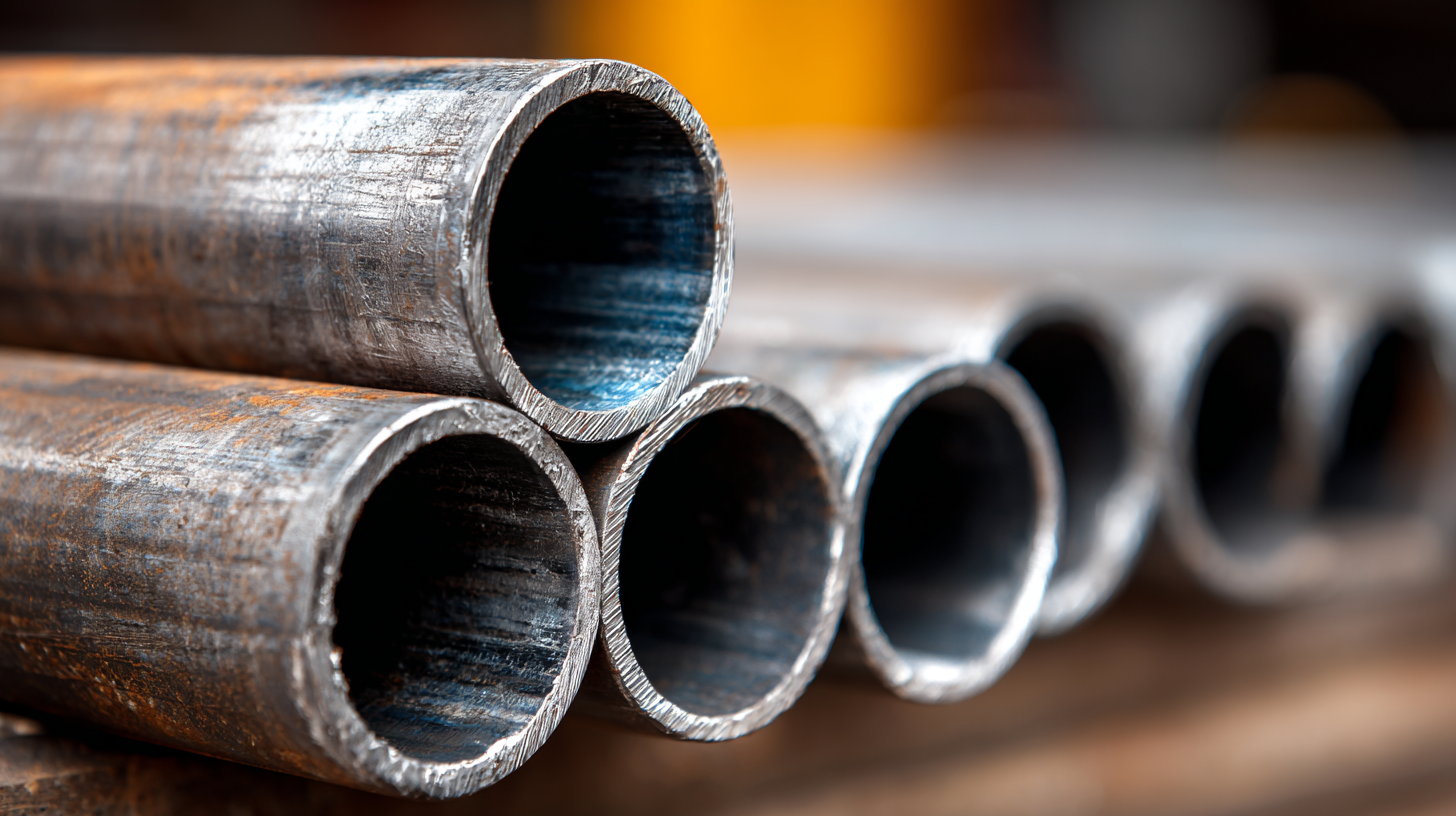
Enhancing Aesthetic Appeal with Pipe Stainless Applications
The use of stainless steel pipes in modern construction techniques not only offers functional benefits but also enhances the aesthetic appeal of structures. With their sleek and polished finish, these pipes provide a contemporary look that can elevate the design of both interior and exterior spaces. Architects and designers are increasingly incorporating stainless steel pipes into their projects, utilizing them as structural elements, railings, and decorative fixtures that resonate with modern sensibilities.
Moreover, the versatility of stainless steel allows for creative applications that contribute to visual interest. For instance, exposed pipe designs can create an industrial feel, while uniquely shaped pipes can serve as artistic installations. By using stainless steel pipes in various applications, builders can achieve a harmonious balance between durability and elegance. This material not only withstands the test of time but also maintains its aesthetic integrity, making it a popular choice for high-end residential and commercial projects alike.
Cost-Effectiveness of Using Pipe Stainless in Modern Structures
The current trend in modern construction techniques is increasingly favoring the use of stainless steel pipes, particularly due to their cost-effectiveness. Stainless steel pipes offer significant durability and require minimal maintenance, making them a smart investment in the long run. As reported, the global market for stainless steel pipes and tubes is expected to surpass USD 48.81 billion by 2030, indicating a strong demand driven by their reliable performance and longevity in various applications.
Tips for optimizing the use of stainless steel pipes include assessing project-specific requirements to choose the right grade of stainless steel, which can enhance both performance and cost savings. Additionally, integrating efficient logistics and installation practices can further reduce labor costs and project timelines, ensuring that the use of stainless steel remains economically viable.
Moreover, as Asia and the global market continue to expand, sourcing stainless steel locally can help mitigate transportation costs and support regional economies. Staying informed about these market trends can assist construction professionals in making more strategic decisions regarding their material choices, ultimately leading to more sustainable and economical building practices.
Corrosion Resistance: A Key Advantage in Challenging Environments
In modern construction techniques, the use of stainless steel pipes has gained significant traction, particularly due to their exceptional corrosion resistance. This characteristic is essential in challenging environments where traditional materials may fail. Stainless steel's ability to withstand rust and degradation allows for longer-lasting structures, reducing maintenance costs and increasing the longevity of projects. In coastal areas or industrial settings, where exposure to salt, chemicals, and moisture is commonplace, the durability of stainless steel becomes even more critical.
Furthermore, the corrosion resistance of stainless steel pipes can enhance safety in construction. By minimizing the risk of material failure caused by environmental factors, builders can ensure that structures remain safe over time. This reliability is particularly important in infrastructure projects, such as bridges and tunnels, where compromised materials could lead to catastrophic failures. As the construction industry continues to evolve, the advantages offered by stainless steel, particularly its resilience against corrosion, position it as a material of choice for modern builders facing the challenges of diverse environmental conditions.
Corrosion Resistance of Material Types in Challenging Environments
Sustainability Benefits of Pipe Stainless in Green Building Initiatives
The rise of green building initiatives has transformed the construction landscape, with sustainability becoming a critical focus. Pipe stainless steel has emerged as a key material in this movement, offering numerous environmental benefits. One of its most significant advantages is its long lifespan. Unlike other materials, stainless steel is highly resistant to corrosion and wear, ensuring that structures require less frequent replacements or repairs. This durability directly reduces the amount of waste generated and the resources consumed over time, aligning perfectly with sustainable practices.
Furthermore, pipe stainless is fully recyclable, making it an ideal choice for eco-conscious construction projects. When buildings reach the end of their lifecycle, stainless steel can be repurposed without diminishing its quality, which helps to conserve natural resources and minimize landfill contributions. The use of pipe stainless also promotes energy efficiency during manufacturing, as the production processes have advanced to reduce emissions and energy consumption. As architects and builders increasingly prioritize sustainability, incorporating pipe stainless into modern construction not only meets environmental objectives but also enhances the overall resilience and performance of built environments.
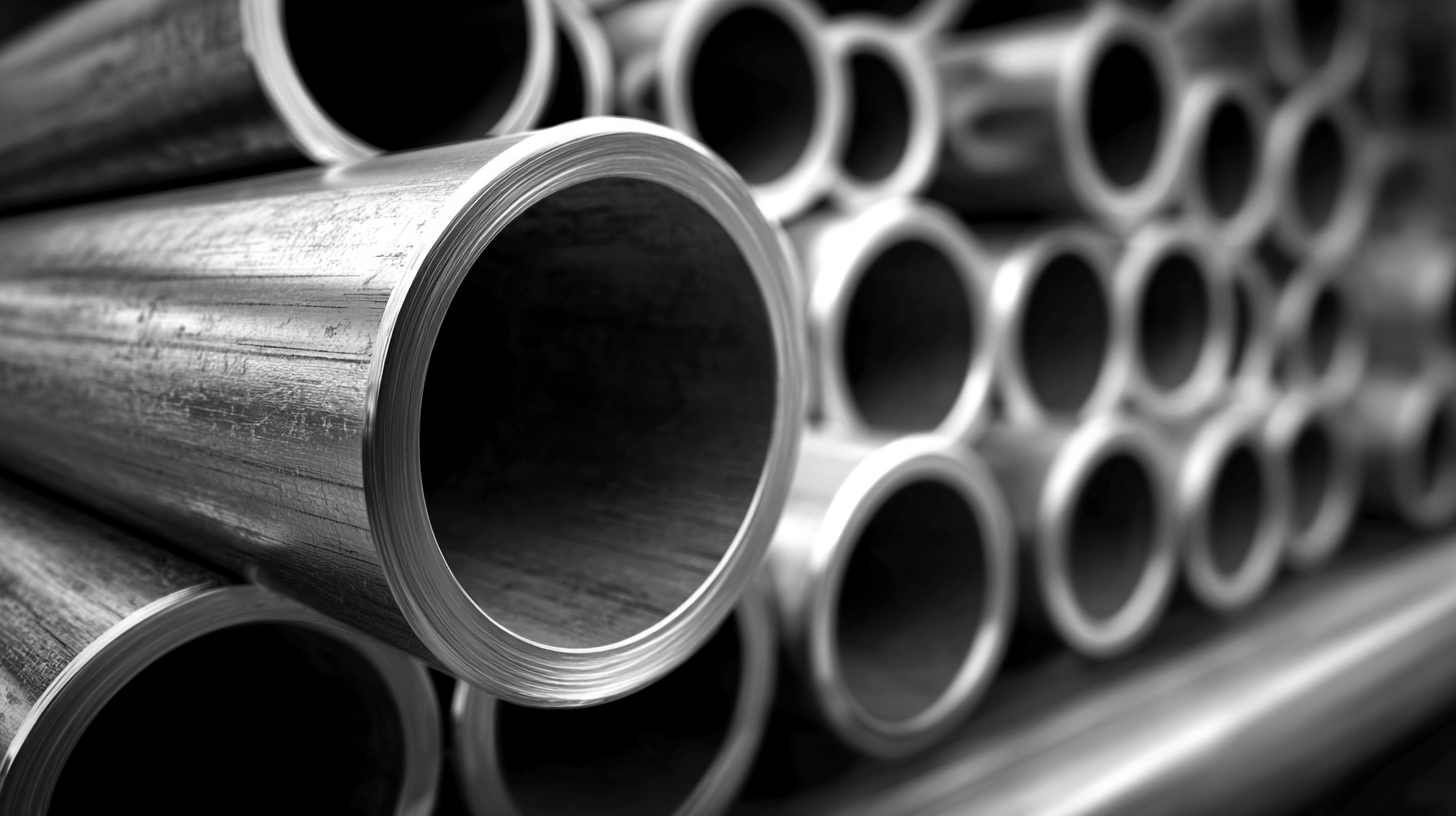

Home
About Us
Products
Carbon & Carbon Alloy Steel
Stainless Steel
Copper & Nickel Alloy
Heat Efficiency Tubes
Pipe Fittings
Pipe Flanges
Gasket, Stud Bolt &Nut
Industrial Valves
Tech & Service
Blog
Contact Us


